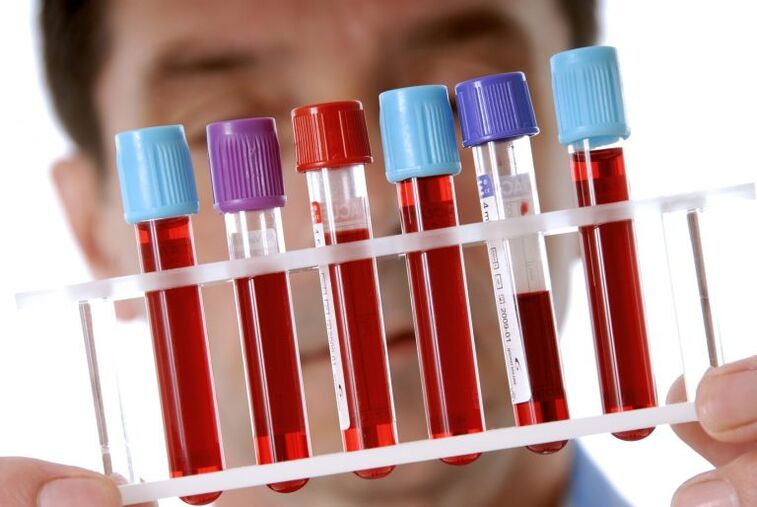Various scientific studies have confirmed the association of many human medical conditions with parasitic diseases. Heartworm disease in humans often shows no specific symptoms of the disease, so it can persist in the body for many years, causing complications and dangerous diseases. Sometimes the only symptom of parasitic disease may be black dots in the stool or light-colored helminth eggs and worms in the stool. To know if there are worms in the human body, it is necessary to conduct a diagnosis. First, they conduct fecal research, so it is important to know what worms look like in human feces, and also to understand the types of human parasites. In addition to parasites, our article will describe the symptoms of worms in humans and methods for diagnosing a parasitic disease.
Symptoms of worms in humans

It is easy to understand what the worm eggs are in the stool, and what the worms themselves look like, from the photo. The different types of worms in a person in the photo can differ significantly. The size of some egg or adult worms is so small that other parasites can be seen in their feces and eggs without a microscope. That is why when answering the question of whether eggs can be seen with the naked eye, it is necessary to take into account what kind of worms live in a person.
Eggs in the stool are not always present, sometimes the only symptoms of helminthiasis may be the following:
- weight loss;
- general weakness;
- often get tired quickly;
- skin turns pale;
- itching in the anal area.
However, some symptoms of the disease are caused by worm larvae or adults, the sick person is not even related to the worms. These symptoms include the following:
- flatulence, diarrhea and constipation;
- nausea and vomiting;
- pain in the right upper umbilicus and lower abdomen.
When such symptoms appear, it is necessary to first conduct a study of the volume of stools. In this case, the smallest worm eggs in the feces can be detected. Since it is difficult to identify worm eggs on your own, it is better to send the stool to a laboratory for analysis. Only an expert knows what worm eggs look like.
Sometimes there are no parasites in the stool, but the patient shows signs of general intoxication. When the toxin of the parasite affects the human nervous system, the following symptoms of the disease appear:
- dizzy;
- weariness;
- headache;
- increased irritability;
- sleepy;
- Depression;
- convulsions;
- increased temperature.

If worms and their eggs are found in the feces of a child, then the symptoms of the disease are often supplemented by various allergic manifestations:
- urticaria, dermatitis;
- dermatitis;
- skin itching, redness.
Worms in the feces of adults or children can be detected only at a certain stage of the disease, and even then not always. That is why it is not so important to know what a parasitic larva looks like, as it is important to understand the symptoms of a particular parasitic disease:
- Pinworms that cause filariasis often cause intense itching in the anal area, which is worse at night. That's because these roundworms (ringworms) lay their eggs in the folds around the anus, crawling out of the anus.
- A characteristic symptom of strongyloidiasis, diphyllobothriasis and trichuriasis would be anemia and beriberi.
- The symptoms of roundworm disease depend on the stage of development of the helminth. During the migratory phase, the clinical picture is presented by a complex of respiratory symptoms (dyspnea, cough, bronchitis, pneumonia). In the intestinal stage, symptoms appear that are characteristic of gastrointestinal pathologies. In this case, black spots may appear in the stool.
- Fever, facial swelling, and muscle pain occur with toxocariasis.
- If the fluke has settled in the liver, pancreatitis develops, the sclera and skin become yellow, and the spleen enlarges. With this form of the disease, fibers and black dots in the stool mass may be absent.
- Schistosomiasis causes bleeding in the genitourinary system, so bloody urine may be present. Often parasites cause digestive disorders.
Types of Worms

In the photo, worms in a person can differ significantly depending on their specific species. Therefore, tapeworms and roundworms parasitize the human body. In the photo, helminths of the same breed can also be different. Therefore, pinworms, roundworms, trichinella, roundworms, hookworms all belong to the level of roundworm. There are two classes of flatworms:
- tapeworms (this is pork tapeworm, beef tapeworm, tapeworm, broad tapeworm, tapeworm);
- flukes (including schistosomes, opisthorchis, paragonim).
You can learn about this worm or that worm in the photo. We will describe the features of the existence of the main parasites in the human body:
- Pinworms cause intestinal worms, symptoms appear on the third day after infection. Eggs enter the body with unwashed hands, fruits and herbs.
- Vlasoglav causes a disease called toxocariasis. Its first symptoms can be seen from 21-35 days after the invasion. Infection occurs when cooking in unsanitary conditions. Usually patients have tormented diarrhea, loss of appetite, abdominal pain. It could be an inflamed appendix.
- The culprit of diphyllobothriasis is a broad tapeworm. The disease manifests itself within 2-5 weeks from the time of infection. Parasites get into the body of poor-quality fried fish that are infected. This type of worm can live in the human body for decades, causing anemia, beriberi, intestinal obstruction, allergies and poisoning.
- Roundworm is the culprit of roundworm disease. When infected with these worms, black dots can appear in the stools of adults and children. From the time of invasion to the appearance of the clinical picture, it takes up to three months. Parasites enter the intestine by plant food.
- Roundworm - hookworm provokes hookworm. Infection can occur when working on the ground, walking barefoot on the ground. The disease manifests itself 5-8 days after infection. The first is itching and swelling at the site of the parasite's entry, then coughing a lot of phlegm, dizziness, and weakness.
- The giant liver fluke causes fascioliasis. Parasites enter the body with contaminated water and plant food. The first signs of the disease can be seen after 0. 5-1 months from the onset of infiltration. The disease is manifested by dry cough, fever, abdominal pain and loss of appetite.
- A species of worm called trichinella is the culprit that causes trichinosis in humans. Worms can enter the human body with poorly processed meat and fat. The first symptoms appear two days after infection. Usually patients are tormented by diarrhea, heartburn and nausea.
Diagnosis of helminths

When diagnosing many helminthiasis, a stool study is performed first. If you find black dots in the stool or white worms in the stool, this analysis should be done as soon as possible.
However, it is not just stool with black dots that indicates an assimilation program. Often, even eggs that are not visible to the eye can be easily identified under a microscope. A more accurate diagnosis of fecal mass for the detection of helminthic DNA particles is made by PCR technique.
If a person has a lot of black dots in the stool, then, among other diagnostic methods, the following should be mentioned:
- Shave from the area near the anus;
- Blood tests by ELISA, PCR, RNAS and other methods;
- Ensure blood biochemistry and KLA;
- In some cases, ultrasound, MRI and CT are performed to determine the localization sites of the parasite;
- To diagnose the migratory stage of helminths, X-rays are indicated.
In some forms of helminthic infections, sputum, rectal mucus, urine, and gallbladder may be examined. In addition, endoscopic examination is sometimes used in diagnosis.






























